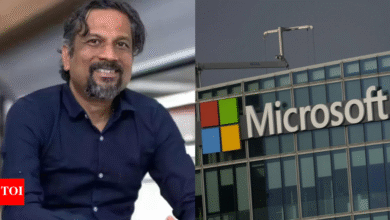Amazon Echo Show’s Full-Screen Ads Are Driving Users Crazy

▼ Summary
– Amazon recently launched redesigned Echo Show smart displays, positioning them as the first step toward creating beloved products.
– Users are reporting intrusive full-screen sponsored ads appearing on Echo Shows during Photo Frame mode and between content categories.
– Unlike previous advertising on Echo devices, these new ads cannot be disabled and appear without any product discount or prior indication of ad support.
– Amazon’s response states that ads help discover content and can be skipped, but users find them disruptive and are seeking refunds or workarounds.
– The author argues that Amazon should focus on delivering real value through Alexa Plus rather than intrusive advertising that compromises user experience.
Amazon’s Echo Show smart displays are facing a significant backlash from users due to the recent introduction of intrusive, full-screen advertisements. These sponsored promotions appear during photo slideshows and between content cards, transforming what many consider a helpful household device into an unwelcome digital billboard. Unlike previous, less obtrusive advertising methods on Alexa-enabled devices, these new ads cannot be disabled, leaving customers feeling frustrated by a feature they never agreed to.
The experience is jarring for many. A device set to display personal family photos might suddenly interrupt a cherished memory with an unsolicited promotion for herbal supplements or snack chips. Users report these ads appearing repeatedly, creating a constant distraction. While Amazon has long incorporated subtle promotional elements into its ecosystem, this aggressive, visual approach marks a dramatic shift. There was no prior indication that purchasing an Echo Show meant bringing an ad-supported product into your home, nor is there a discounted price to offset this new commercial intrusion, unlike Amazon’s ad-supported Kindle models.
The situation is compounded by the launch of Alexa Plus, Amazon’s upgraded voice assistant, which also incorporates full-screen ads for its own services. This has led to a surge of complaints on forums like Reddit, with many users reporting they have simply unplugged their devices. Some have even successfully requested refunds from Amazon, citing the ads as a reason.
When questioned about how advertising aligns with creating beloved products, Amazon Devices leader Panos Panay offered a different perspective. He suggested that relevant promotions are not ads but “add-ons” that can help customers find what they need more efficiently. He did, however, acknowledge that the “randomness” of the current ad experience is problematic and needs refinement to elegantly elevate useful information for the user.
In practice, this ideal is far from reality. The ads often promote products with no relevance to the user’s interests. Amazon’s official guidance is that customers can simply swipe to skip an ad or provide feedback by tapping an information icon. Selecting “irrelevant ad” might pause that specific promotion, but it does not prevent others from appearing. This has prompted users to seek out creative workarounds, such as changing their device’s language setting to Canadian English or enabling Kids Mode, but these are temporary fixes that limit the device’s core functionality.
The core issue is that these ads feel like a bait-and-switch to loyal customers. The smart home market is already a landscape of compromises. While Amazon’s Alexa is a powerful assistant, its constant attempts to sell products undermine the user experience. Google’s commitment to its smart home division often seems uncertain, and Apple’s Home platform, while offering a polished experience, comes with a high cost and is locked into its own ecosystem. Other DIY solutions require a level of technical expertise that is beyond the average consumer.
As Amazon pushes forward with Alexa Plus and the concept of an ambient smart home, the company is at a crossroads. To truly deliver on its promise of building products that customers love, it must prioritize user value over advertising revenue. For many, the current path is driving them away from a platform they once trusted.
(Source: The Verge)





